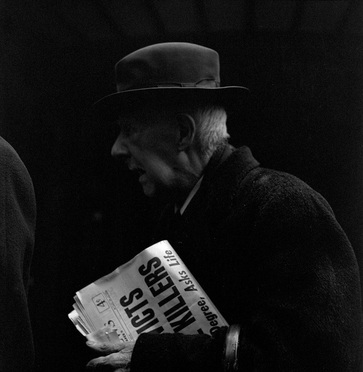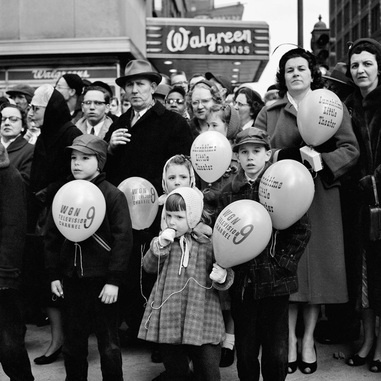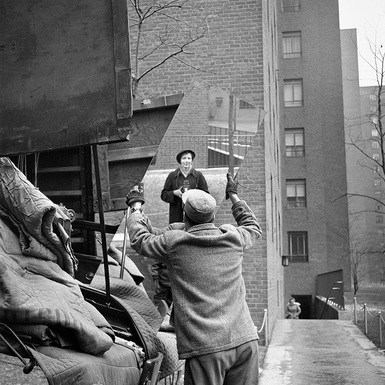The exhibition at the CHM is small - just one room - but quite powerful and moving. Prints are arranged uniquely: rather than framed on the wall, large prints are suspended from the ceiling, so that one must weave in and out of the small space and is directly confronted with the images. In addition, a number of series of small prints line the walls , each image thematically relevant and often from the same roll or rolls of film. Through these, we can trace the production of her images. Since much of her work was not printed until after her death (over 700 rolls of film were undeveloped when historian John Maloof discovered her work in 2007), it seems appropriate to display sections of her photography in this manner, mimicking the way contact sheets are laid out in order for the photographer to make choices about which images to print.
I'm delighted to learn that the exhibition, which was scheduled to close the weekend after my visit, has now been extended to Summer 2014 - so there's plenty of time for you to check it out! Also in the works is a documentary film (see link to the trailer below), which also promises to open our eyes even more to this now-known artist.
Sources for further reading:
Vivian Maier Photographer (official website) (the above images are from this site)
Finding Vivian Maier (official documentary trailer)
Wikipedia entry, with references to exhibitions
Vivian Maier: The Unheralded Street Photographer (Smithsonian Magazine article)
flickr slideshow, from the Chicago History Museum



 RSS Feed
RSS Feed